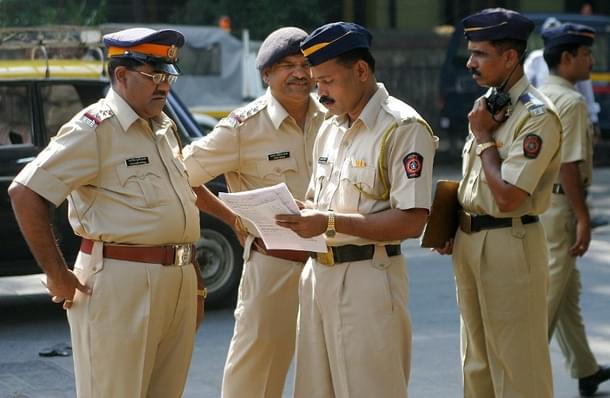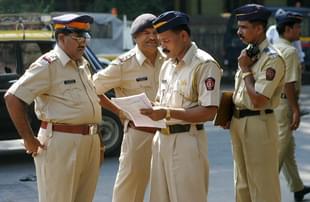Culture
Mental Health Screening: Flawed Approach Can Boomerang
Hansika Kapoor
Jun 09, 2015, 07:23 PM | Updated Feb 19, 2016, 05:01 PM IST
Save & read from anywhere!
Bookmark stories for easy access on any device or the Swarajya app.


Following the murder of a senior police officer at Mumbai’s Vakola Police Station by a colleague (who went on to commit suicide), Mumbai Police Commissioner Rakesh Maria set in motion, mental health evaluations for the Mumbai Police force. This implied assembling trained mental health professionals to conduct comprehensive psychological tests on thousands of police personnel in Mumbai.
Initial screening would determine which individuals would require further assistance, through awareness lectures and individual treatment. In fact, a senior psychiatrist also wrote an open letter suggesting several ways to curb suicides and promote mental health in the force.
However, how do you screen for mental illness? Typically, through a questionnaire or a psychological test. The salient features of such tests are high reliability (consistency in measurement) and validity (they measure what they’re supposed to measure). For instance, if you’re asked a series of questions about your appetite, sleep patterns, changes in mood, or increasing disinterest in things you usually liked, you’re probably being screened for a mood disorder (depression).
Such screening instruments have been developed, keeping in mind the science of psychometrics (psycho meaning related to the mind, and metric meaning related to measurement). In essence, these are tools developed for psychological measurement, and have to be administered, scored, and interpreted by trained mental health professionals.
Returning to the mental health check-ups for the police, the tests included questions on physical and mental health, personal and emotional problems, and alcohol use. Tobacco use, which is on the rise among police personnel, was not mentioned as an area of assessment. Further, it was unclear whether the tests had been translated into Marathi from standardised assessment tools, or were a set of compiled questions.
The reason I raise such questions is because the psychometric sensitivity and specificity of such tools is paramount to the efficiency and success of any mental health screening. This basically means that the tests should be able to adequately discriminate between individuals who experience symptoms and those who do not. In the absence of standardised tools, we cannot claim with certainty which personnel require further assistance with mental health interventions; this is because we will not know above which cutoff score the individual’s score must lie, to require further assessment. Similarly, non-standardised psychometric tools run the risk of being arbitrary when it comes to setting cutoff levels.
Let me explain this with an example. Imagine you’re playing a video game, where you have to collect a certain number of points to advance to the next level. This number is determined by averaging several other players’ scores on the same game. So if you manage to get more than the average score, you’ll move to the next level. Now, unless you have data on other players’ scores through research, you will not be able to determine the average, which is like the cutoff.
If your score on a psychological test (the cumulative number of symptoms you experience) is above average (more than the cutoff), you need to go to the next level (individual treatment and therapy). I admit I’m not proud of the analogy, but the necessity of having uniform tests for mental health screening, with cutoffs, had to be emphasized. Using standardized psychometric tests is the first step. The second is to ensure that trained professionals interpret the test results; the dearth of such professionals can be addressed in another post. However, if the Local Arms Deputy Commissioner wants to allow only mentally fit personnel to be allocated firearms, the criteria of mental fitness must be clearly defined, in a consistent and valid manner.
A recent instance of a lack of face validity (the test does not “look” like it is measuring what it is supposed to measure) occurred with when Air India aspirants claimed that the 10-minute oral test with a psychologist asked irrelevant questions of them. Apparently, questions like “what does your father do?” were asked, which are regular fixtures in job interviews, but definitely not in psychometric assessments.
On the bright side, the DGCA is contemplating regular psychometric tests for pilots, in light of the Germanwings suicide-homicide. Although such evaluations are conducted upon induction into airlines (policy demands it), subsequent testing is absent. Physical health, on the other hand, is assessed every six months, which is characteristic of the lopsided emphasis on the body in lieu of the mind. However, as the DGCA is still designing the protocol for mental health screening and testing, it is important that they focus on the psychometric features of the tools. These include reliability, validity, test length, and areas (subscales) assessed by the test.
For instance, whether the tool assesses anxiety and mood symptoms, which may be relevant areas for screening. Using available tools, like the General Health Questionnaire (GHQ) or the Self-Reporting Questionnaire found to have better discriminability, compared to other similar questionnaires can be employed after appropriate translations are completed. Similarly, private organisations may choose to provide support to their employees via Employee Assistance Programs (EAPs). Such initiatives include using psychometric assessments, such as the GHQ or resilience measures, to screen individuals and provide targeted help for dealing with personal and professional concerns.
EAPs managed by external counselling agencies are being incorporated into corporate offices, and the initiative taken by Maria could be reframed as an EAP for government officials. However, for EAPs to be efficient, the psychometric tools used are, needless to say, standardized, reliable, and valid. Addressing mental health in strictly hierarchical professions having long and erratic working hours is crucial.
Another similarity between pilots and police personnel is that they’re meant to be responsible for the security and safety of others. Screening for mental illness is a significant step to combat myths and misconceptions associated with the same. However, such assessment needs to be conducted by psychologists and psychiatrists, using reliable and valid tools. Else, individuals with mental health concerns may go under the scanner, and screening may not be sufficient to prevent another fatal incident.
Hansika Kapoor works at the Department of Psychology, Monk Prayogshala.





